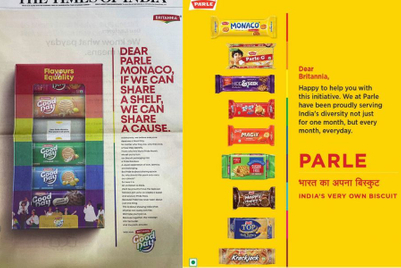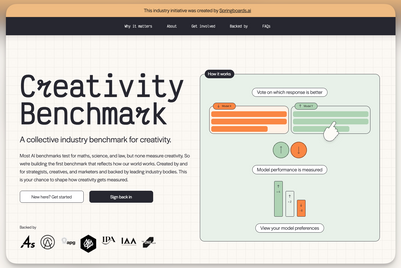
For Parmesh Shahani, true inclusion is about much more than adding a rainbow logo in June — it’s about making sure everyone feels a deep, genuine sense of belonging. As the head of Godrej DEI Lab and author of Queeristan, he believes this starts when queer employees no longer have to think twice before putting up a picture of their partner at their desk. “Or, when your workplace reflects the full diversity of the world outside,” he emphasises.
This view underscores a growing reality for companies today: Pride-centric campaigns and rainbow logos have become a baseline — not a benchmark — for a culture of true allyship. Brands that wish to be taken seriously by their consumers and employees need to move from symbolism to sustained action.
Today, companies are increasingly expected to match their external messages with internal practices. Shreegauri Sawant, a transgender activist who assists companies in better understand diversity and inclusivity, underscores this when she says, “In my experience, while corporates are exhibiting a genuine intent at making inclusivity a culture, most do not think of it beyond a tick-box activity.”
Collaborating with the women-led integrated marketing communications collective Oon as a consultant, she adds that very few organisations implement policies with a full understanding of the legal, social, and cultural implications of what they are laying out. While they intend to do good, they can invite trouble when doing it all by themselves without getting people in the know to help devise these.

For companies unsure of their path forward, having an external counsel made up of lived experience advocates is a powerful way to align their initiatives with ground realities. But several larger companies have decided to bring these capabilities in-house to reflect true equity and dignity. Godrej is a case in point.
“At the Godrej Industries group, we’ve been celebrating Pride and talking about DEI and workplace inclusion well before it became a buzzword! We believe that meaningful allyship is demonstrated by what you do all around the year,” Shahani reveals.
This means having best-in-class LGBTQIA+ policies and benefits, active hiring from the community, year-round sensitisation and training, providing infrastructure such as all-gender washrooms, visible leadership support, and creating safe spaces where LGBTQIA+ employees can thrive. Initiatives like caregiver benefits reflecting non-traditional families, safe housing for transgender employees, and a policy to hire from the community — all signals to the workforce and the market that this isn’t a performative exercise.
Meanwhile, for MagickHome’s senior general manager and head of marketing Jayesh Sali, this approach is woven into their creative and operational culture. “We believe that inclusion should be embedded in the way we work, not just how we campaign… Whenever possible, we seek out partnerships with queer designers, makers, and artists whose work inspires us and give them space to share their vision through our collections,” he said.
Resisting the call of tokenism
How do companies guard against the temptation to produce campaigns that are all style and no substance? Shahani is emphatic that this has never been Godrej’s approach. And he highlights the role of leadership in this, noting how Godrej Consumer Products’ executive chairperson Nisaba Godrej has demonstrated this through her decisions, showing what it means to lead with empathy and courage.

This underscores a framework that merges hard policy with deep culture-building — data alongside conversations, policy alongside education — to track progress. For Sawant, the danger of tokenism often lies in companies believing they can “speak for” a community without lived experience at the table.
“I can speak of the many times I have been asked to ‘help get three to four transgender people’ who can be hired to show the organisation’s inclusivity mindset. While I appreciate their intent, it is very much classic tokenism,” she notes.
Meanwhile, Sali advocates a policy of collaboration from concept to execution. While he admits that there have been moments where the interior design company had to pause and push back internally to assure its Pride initiatives were not just performative but genuinely respectful and purposeful.
MagickHome, therefore, proactively seeks feedback from LGBTQIA+ team members, collaborators, and creatives within its network. “It’s this collective input that helps shape our work in a way that feels real, inclusive, and respectful of the community we aim to stand with,” Sali said.
Measuring impact — beyond conversion metrics
For many companies, the true return on their Pride initiatives lies in hard-to-quantify signals — loyalty, sentiment, and reputation — alongside hard metrics. Aamir Quereshi, a performance marketing expert claims that it’s not just about hard numbers; marketers also pay close attention to subtler signals — how much content sparks conversation, the kind of feedback they get directly from communities, and the overall feeling it leaves people with.
For Sawant, the measure of success lies in “social metrics”. This could include whether people “give us respect like any other human being, do not judge us, stand up for us, protect us, give space to our choices. To me, THIS is what brands should focus on both within and outside to genuinely earn cultural trust,” she emphasises.
Shahani underscores this view, noting the long game. He feels that one of the biggest mistakes brands make when it comes to LGBTQIA+ inclusive marketing is that they treat it lke a box to check… true inclusive marketing means shifting both systems and mind-sets. This is a long-term game.
He highlights the concept of “cultural acupuncture”—making small, purposeful moves to align policy and culture—that collectively add up to significant change. “If you’re making an ad, work with a director and team that are queer themselves. Cast queer people in the ad. Promote it just as you would promote a non-queer ad or marketing campaign,” he adds.
Shahani points to Godrej’s Diwali campaigns featuring transgender people and same-sex couples and Godrej Capital’s home-loan campaigns addressing the LGBTQIA+ market — initiatives made possible by structural policy and a deep understanding of their community.
Looking forward — marketing in 2025 and beyond
So, what will allyship look like in the future? For Quereshi, it’s about making it an ongoing discipline — not a seasonal tactic. “Allyship in marketing come 2025 isn’t a box-ticking exercise — it’s about making sure it’s woven into the way you operate,” he adds. “It’s a powerful business move — companies that truly embrace it innovate faster, keep their best people, and reach a much broader market.”
For companies like Godrej, the future of inclusion is holistic, intersectional, and business-integrated. It has ongoing collaborations — with Dasra, the Keshav Suri Foundation, and Radhika Piramal — to launch initiatives like India’s first Pride Fund.
A key consideration for 2025 is understanding that “6-10% of your target audience is queer.” So, Shahani suggests that brand marketers should think closely about how they can create authentic marketing experiences — which are non-patronising, and genuinely address their needs and aspirations.
For Sali, this means going forward with “intentional, transparent, and sustained” strategies — not periodic campaigns — reflecting a deep understanding of “how, when, and why you say it.”
Companies like Hindustan Unilever and P&G have also made it a year-round discipline to build true allyship. This is to make sure these activities are not just a June affair but exist across all aspects of the organisation.
Sawant opines that it’s about owning the cause and promoting it across audiences and platforms consistently. ‘Campaigns can win agencies and clients a Cannes award, but genuine efforts win them lifelong love and respect,” she states.
As Pride evolves from a once-a-year, logo-waving moment into a sustained culture shift, the role of marketers is changing. Today’s consumers — and employees — can spot a rainbow-washed effort a mile away. The companies that will flourish in 2025 and beyond will be those who view Pride and inclusion not as a side project or a publicity opportunity, but as a core business imperative.
This means employing policy, education, collaboration, and data — alongside creativity — to drive transformation from within. It means putting people from the community in the lead, not just in photo shoots. It means measuring success by the depth of relationships and loyalty, not just by likes and shares.
For the industry, the path forward is clear: move from symbolism to substance. Brands that match their messages with action will not only win the trust of consumers and employees — they will future-proof their businesses in a world that increasingly demands authenticity.


.jpg&h=334&w=500&q=100&v=20250320&c=1)
.jpg&h=334&w=500&q=100&v=20250320&c=1)
.jpg&h=334&w=500&q=100&v=20250320&c=1)







.jpg&h=268&w=401&q=100&v=20250320&c=1)




.png&h=268&w=401&q=100&v=20250320&c=1)


